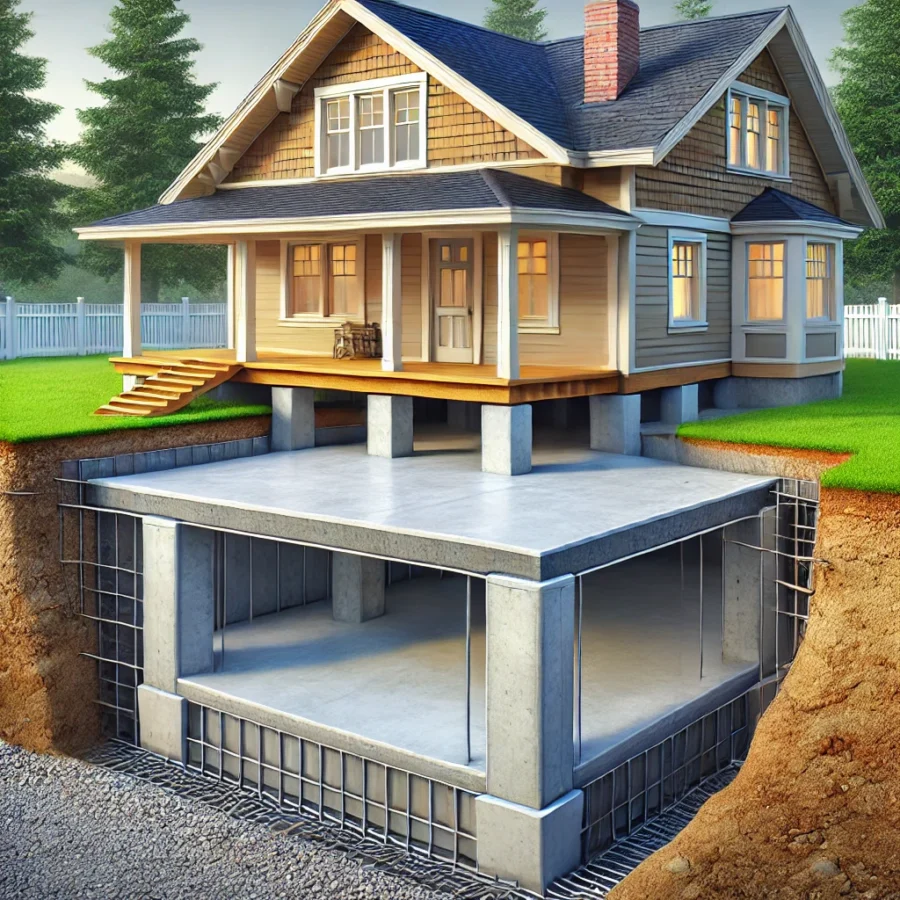Yes, you can add a concrete slab under an open crawlspace house, but it requires careful planning and execution to ensure structural integrity and compliance with building codes. Here’s what you need to consider:
Benefits of Adding a Concrete Slab Under a Crawlspace
- Improved Stability: A concrete slab can provide a more stable foundation and reduce issues like shifting or settling of the house.
- Moisture Control: Concrete slabs can act as a barrier against ground moisture, helping to prevent mold and mildew in the crawlspace.
- Pest Prevention: A solid slab makes it harder for pests and rodents to enter the crawlspace.
- Energy Efficiency: Adding a concrete slab can improve insulation, reducing energy costs for heating and cooling.
- Ease of Maintenance: A slab provides a clean, durable surface for inspections or repairs.
Steps to Add a Concrete Slab Under a Crawlspace
- Consult a Structural Engineer:
Hire a professional to assess the existing foundation and determine if adding a slab is feasible without compromising structural integrity. - Prepare the Crawlspace:
- Clear the Area: Remove debris, old insulation, or obstacles.
- Address Drainage Issues: Ensure proper drainage to prevent water accumulation. Installing a perimeter drain may be necessary.
- Install a Vapor Barrier: Lay down a polyethylene sheet to reduce moisture from the ground.
- Excavate (If Needed):
If the crawlspace lacks sufficient height, excavation may be required to create room for the slab. Be cautious to avoid undermining the foundation. - Form the Base:
- Add a Gravel Layer: Spread a layer of compacted gravel to create a stable base.
- Reinforcement Mesh: Place a steel reinforcement mesh or rebar for additional strength.
- Pour the Concrete:
- Use a high-quality concrete mix suitable for the environment.
- Smooth the surface with a screed or trowel for a level finish.
- Allow the slab to cure properly, which can take several days.
- Insulate (Optional):
Add insulation over the slab if desired for additional thermal protection.
Challenges to Consider
- Access Constraints: Crawlspaces often have limited access, making it harder to pour and finish concrete.
- Ventilation Requirements: Building codes may require proper ventilation to prevent moisture buildup under the slab.
- Cost: Excavation, reinforcement, and concrete pouring can be expensive, especially in tight spaces.
- Potential Foundation Impact: Ensure the slab does not negatively affect the house’s foundation or load distribution.
Building Code Compliance
Before starting, check local building codes and obtain necessary permits. Some areas have specific requirements for crawlspace conversions and foundation modifications.
Alternative Options
If adding a slab is too challenging, consider these alternatives:
- Encapsulation: Sealing the crawlspace with a vapor barrier and insulation.
- Gravel Base: A simpler, cost-effective option for moisture control.
- Elevated Flooring: Creating a raised platform over the crawlspace.
Adding a concrete slab under a crawlspace can enhance the functionality and durability of your home, but it’s a complex project that should involve professional guidance to ensure safety and effectiveness.










